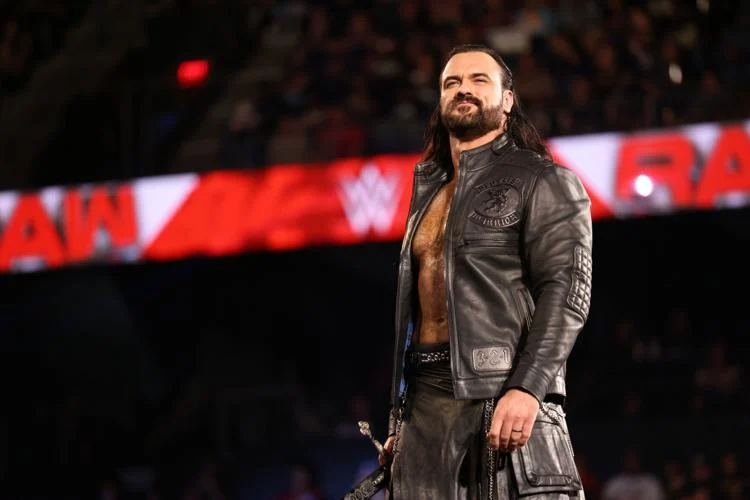
Drew McIntyre will challenge Seth Rollins for the World Heavyweight Championship in under two weeks at WWE WrestleMania 40 (Night Two).
On a recent edition of “The Masked Man Show” podcast, McIntyre discussed his heel turn and subsequent changes to his on-screen character.
You can check out some highlights from the podcast below:
On injecting truth to his character: “McIntyre, who has been the same guy for fifteen years. And a lot of it to me personally, man, I just want to inject the truth, speak my truth, and really pull from the past — something which we never did before.”
On how the crowd will react negatively to him: “The truth hurts sometimes. But they still think it’s just a wrestling thing, like the world we live in, a lot of people are just fake that’s why it’s refreshing to hear somebody telling the truth even if they don’t like it.”
On how he’s trying to be himself on TV: “I’m trying to be myself, trying to be logical, trying to be fun, and create compelling TV. There’s no reason to shout. It’s all a case of just relaxing, and being confident, and being present. It’s finally just me relaxing, talking like a human being. Extra energy doesn’t mean shouting.”
Drew McIntyre Discusses His Heel Turn and Changes to His On-Screen Character
In the world of professional wrestling, character development is crucial to creating engaging storylines and captivating audiences. Drew McIntyre, a prominent figure in the WWE, recently opened up about his heel turn and the subsequent changes to his on-screen persona. With his upcoming match against Seth Rollins for the World Heavyweight Championship at WWE WrestleMania 40 (Night Two), McIntyre’s insights shed light on his approach to injecting truth into his character and connecting with the audience.
During a recent episode of “The Masked Man Show” podcast, McIntyre emphasized the importance of injecting truth into his character. He revealed that he has been the same person for fifteen years and wants to speak his truth, drawing inspiration from his past experiences. This shift in approach allows him to bring a level of authenticity to his character that was previously unexplored.
McIntyre acknowledged that some fans may react negatively to his character due to the uncomfortable truths he presents. However, he believes that in a world where many people are fake, it is refreshing to have someone speak the truth, even if it is not always well-received. By challenging the audience’s perception of what a wrestling character should be, McIntyre aims to create a more genuine and relatable persona.
One significant change in McIntyre’s on-screen character is his attempt to be himself. He strives to be logical, fun, and create compelling television by simply being present and relaxed. McIntyre emphasizes that there is no need for excessive shouting or exaggerated energy. Instead, he aims to connect with the audience on a human level, allowing them to see him as more than just a larger-than-life wrestling persona.
This shift in McIntyre’s character development reflects a broader trend in professional wrestling. In recent years, there has been a move towards more realistic and relatable characters, as audiences crave authenticity and genuine storytelling. McIntyre’s desire to inject truth into his character aligns with this shift, as he aims to create a deeper connection with the audience.
As WrestleMania 40 approaches, McIntyre’s heel turn and changes to his on-screen character have generated significant buzz among wrestling fans. The anticipation for his match against Seth Rollins for the World Heavyweight Championship is high, as fans are eager to see how McIntyre’s new persona will unfold in the ring.
In conclusion, Drew McIntyre’s recent discussion about his heel turn and changes to his on-screen character provides valuable insights into the world of professional wrestling. By injecting truth into his character, McIntyre aims to create a more authentic and relatable persona. As he prepares to face Seth Rollins at WrestleMania 40, fans eagerly await the culmination of McIntyre’s character development and the impact it will have on his in-ring performance.
